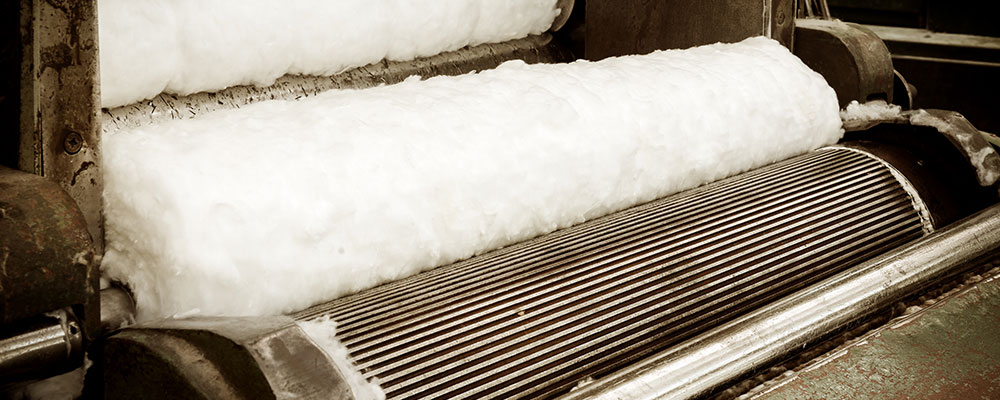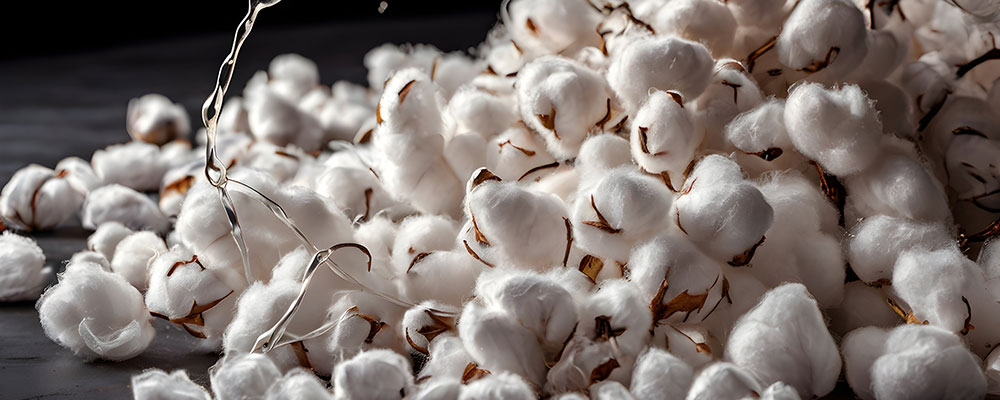The textile industry has long been one of the most chemically intensive sectors, using a variety of harsh chemicals in processes that can have detrimental effects on both the environment and workers. One such process is cotton mercerisation, an essential step in improving the properties of cotton fabric. Traditionally, this process has relied heavily on caustic soda and other strong chemicals to achieve the desired characteristics in the fabric. However, the increasing demand for more sustainable, eco-friendly production methods has led to the exploration of alternatives that reduce the environmental impact and improve worker safety. In this context, enzymes have emerged as a promising substitute for harsh chemicals in cotton mercerisation.
What is Cotton Mercerisation?
Cotton mercerisation is a treatment process that involves soaking cotton fabric in a strong alkaline solution, typically caustic soda (sodium hydroxide), and then subjecting it to tension. This treatment causes the cotton fibres to swell, resulting in a smoother, shinier appearance, greater dye uptake, and improved strength and durability. However, while the process improves the fabric’s aesthetic and functional properties, it also comes with significant environmental and health risks due to the use of harsh chemicals. The caustic soda solution is not only toxic to aquatic life but can also cause skin burns and respiratory issues if not handled correctly.
The demand for safer, more sustainable textile manufacturing processes has led to the exploration of enzyme-based solutions in place of these aggressive chemical treatments. Enzymes are natural catalysts that can selectively modify the properties of cotton without the need for hazardous chemicals. By replacing caustic soda with enzymes in the mercerisation process, the textile industry can significantly reduce its environmental footprint and improve the safety of the manufacturing process.
The Environmental Impact of Traditional Cotton Mercerisation

The environmental impact of traditional cotton mercerisation cannot be overstated. The use of caustic soda and other chemicals leads to the release of harmful effluents, which, if not properly treated, can pollute water bodies and harm ecosystems. Additionally, the production and disposal of these chemicals consume significant energy and resources, further exacerbating the environmental burden of the textile industry.
Furthermore, the caustic soda solution used in mercerisation is corrosive and requires careful handling. If not managed correctly, it can lead to accidents in the workplace, posing serious risks to workers’ health. The water used in the mercerisation process also requires extensive treatment before disposal, adding to the cost and environmental impact of the procedure.
In contrast, enzyme-based mercerisation processes present a cleaner, more sustainable alternative. Enzymes are biodegradable and typically require lower energy input, which reduces both the carbon footprint and the environmental risks associated with the process. By replacing caustic soda with enzymes, textile manufacturers can reduce the amount of hazardous waste generated and the need for complex wastewater treatment systems.
Enzymes as a Sustainable Alternative to Harsh Chemicals
Enzymes work by catalysing specific chemical reactions, breaking down or modifying the structure of cotton fibres in a controlled and efficient manner. Unlike harsh chemicals, enzymes are highly specific in their action, meaning they can modify the fabric’s properties without causing damage to the fibres. For cotton mercerisation, enzymes such as cellulases, pectinases, and amylases are commonly used to achieve similar results to caustic soda but with a much lower environmental impact.
- Cellulases are particularly effective in enhancing the smoothness and lustre of cotton. They break down the cellulose structure of the cotton fibres, causing them to swell and become more uniform in texture. This leads to an increase in the fabric’s ability to absorb dyes, resulting in brighter, more vibrant colours. In addition, cellulases can enhance the fabric’s strength and durability, just as traditional mercerisation does.
- Pectinases are enzymes that break down pectin, a substance found in the cotton plant that can impede the dyeing process. By removing pectin, pectinases allow for better dye penetration, leading to more even and uniform colours. This enzymatic treatment can replace the need for chemical scouring, which is often used to remove pectin and other impurities from cotton fibres.
- Amylases are enzymes that break down starches in the cotton fibres. Starch removal is a crucial part of the mercerisation process as it helps to enhance the fabric’s appearance and texture. By using amylases, manufacturers can achieve similar results to traditional methods but without the need for strong alkaline solutions.
The use of enzymes in cotton mercerisation not only reduces the environmental impact of the process but also offers several other advantages. Enzyme-based treatments are typically more energy-efficient, as they operate at lower temperatures and require less water than traditional methods. Moreover, enzymes are biodegradable, meaning they break down naturally over time, leaving no harmful residues behind.

The Benefits of Enzyme-Based Mercerisation
There are several compelling reasons for the textile industry to adopt enzyme-based mercerisation processes. First and foremost, enzymes offer a much safer alternative to harsh chemicals. The use of caustic soda in traditional mercerisation can lead to chemical burns, respiratory issues, and other health problems for workers. Enzyme-based processes, on the other hand, are non-toxic and pose minimal risks to both workers and the environment.
Another significant benefit is the reduction in water and energy consumption. Enzyme-based mercerisation processes generally operate at lower temperatures and require less water, making them more resource-efficient. This reduction in resource use translates into lower production costs, making enzyme-based mercerisation an economically attractive option for textile manufacturers.
Additionally, enzymes are highly specific in their action, meaning they can modify the cotton fibres in a controlled manner without causing damage. This allows manufacturers to achieve the desired characteristics in the fabric, such as improved lustre, dye uptake, and strength, without the risks associated with traditional mercerisation.
Finally, enzyme-based mercerisation is a more sustainable option for the textile industry. By reducing the need for hazardous chemicals and minimising the environmental impact of the process, enzymes can help textile manufacturers meet increasingly stringent environmental regulations and consumer demand for sustainable products.
Conclusion
As the textile industry continues to evolve, the need for sustainable, eco-friendly solutions becomes ever more urgent. Replacing harsh chemicals with enzymes in cotton mercerisation is a significant step toward reducing the industry’s environmental footprint while maintaining the quality and functionality of the final product. By leveraging the power of enzymes, manufacturers can achieve the same results as traditional mercerisation methods but with far fewer environmental and health risks.
Biolaxi Enzymes Pvt. Ltd., with over 14 years of expertise in enzyme formulation, is at the forefront of this transformation. Offering high-quality, customised enzyme solutions, Biolaxi is committed to providing sustainable, eco-safe products that help the textile industry reduce its reliance on harmful chemicals. Through innovation and engineering expertise, Biolaxi continues to deliver reliable and cost-effective enzyme formulations for a wide range of industrial applications, including cotton mercerisation. As the industry moves towards greener practices, Biolaxi Enzymes stands as a trusted partner in crafting eco-friendly, high-performance solutions for textile manufacturers worldwide.




